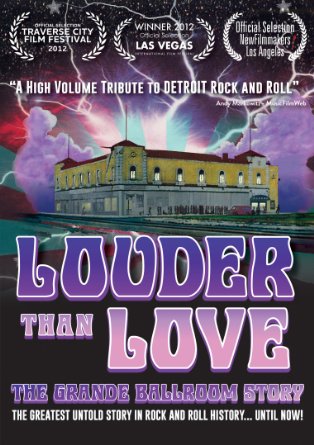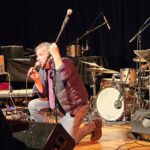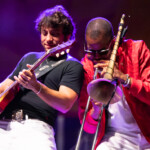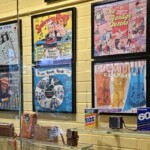 Over the years, I have worked with many acts (Savoy Brown, Ten Years After, Peter Green, etc.), and they all have said to me that the best shows in Detroit always took place at the Grande Ballroom. In Detroit last July for the Windsor Blues Festival (Detroit and Windsor, ONT are right across the St. Laurence River from each other), I drove out to see where this historic club had once stood. What I found was a shell to a great shrine of music; it was well worth the ride.
Over the years, I have worked with many acts (Savoy Brown, Ten Years After, Peter Green, etc.), and they all have said to me that the best shows in Detroit always took place at the Grande Ballroom. In Detroit last July for the Windsor Blues Festival (Detroit and Windsor, ONT are right across the St. Laurence River from each other), I drove out to see where this historic club had once stood. What I found was a shell to a great shrine of music; it was well worth the ride.
To my great delight, I recently viewed Louder than Love—The Grande Ballroom Story, produced and directed by Tony D’Annunzio, who did an amazing service to music fans by recounting the great history of the Grande Ballroom.
It all started in 1966 when promoter Russ Gibb went to San Francisco to get a look at Bill Graham’s Fillmore West and Chet Helms’ Avalon Ballroom. Pioneers Graham and Helms changed the way rock music was promoted, and Russ Gibb implemented this concept into his new club The Grande Ballroom (this concept did not develop in a vacuum as new “psychedelic” clubs opened in New York (Fillmore East), Boston (Tea Party), Philadelphia (Electric Factory), New Orleans (The Warehouse) and Chicago (Aragon Ballroom). Like all these new “psychedelic” venues the Grande had light shows, lots of sex and drugs and live music three to six nights a week. The thing that was unique about the Grande was that they developed their own local “Detroit” music scene built around hyper-aggressive bands, branded “Industrial Strength Rock and Roll,” centered around their house band, the MC5, whose anthem “Kick Out the Jams” was a not-so-subtle warning that any band performing at The Grande better be ready to rock, and rock hard. The local bands included the Amboy Dukes (with Ted Nugent), the Frost, the Stooges (with Iggy), the Bob Seger System, the Rationals, SRC, Grand Funk Railroad, Cactus, even the young Alice Cooper, all pretty tough acts to follow. The Grande Ballroom had many national acts in their early days, such as Cream, the Who, Ten Years After, Peter Green’s Fleetwood Mac, Frank Zappa, Savoy Brown, the J Geils Band, B.B. King, Led Zeppelin and Big Brother & the Holding Company (with Janis Joplin).
The DVD has some great live footage of the MC5, the Stooges and the Who, as well as interviews with all the key people in the Detroit music scene. John Sinclair, Dick Wagner, Russ Gibb, Mark Farner, Ted Nugent, Wayne Kramer, Tom Wright (club manager), B.B. King, Roger Daltrey, Alice Cooper and Don Was, among others, are all interviewed.
Like Bill Graham, Russ Gibb could not afford to keep putting on shows with three or four great bands a night for only five dollars admission, and it was pretty much over by the end of 1970, even though the Grande kept its doors open until 1972 with other promoters.
Louder Than Love—The Grande Ballroom Story is packed with great historical information about the Detroit music scene from 1966 -1970 and is a must for all rock music fans. Russ Gibb certainly did his job in Saving American Music.
—Arnie Goodman







So true. One small point – Windsor and Detroit are on Detroit river. Otherwise review is spot on. So pleased I am old enough to have spent more than a few nights at the Grande and then the Riviera.